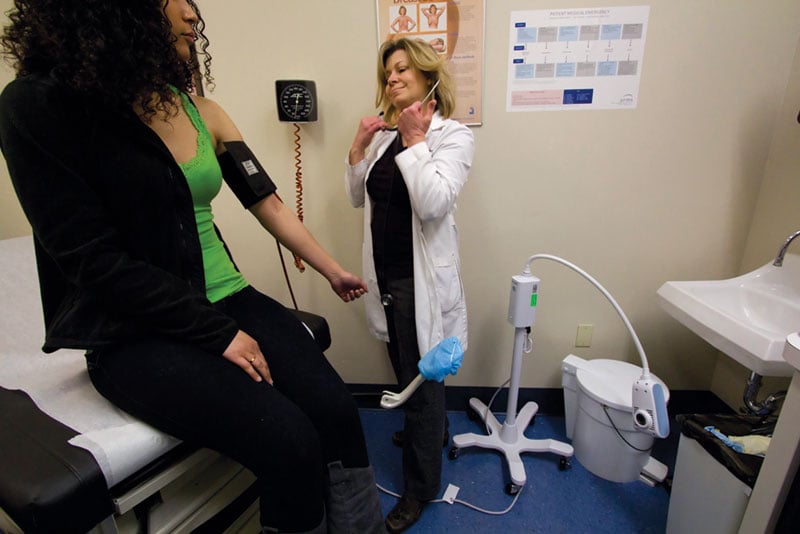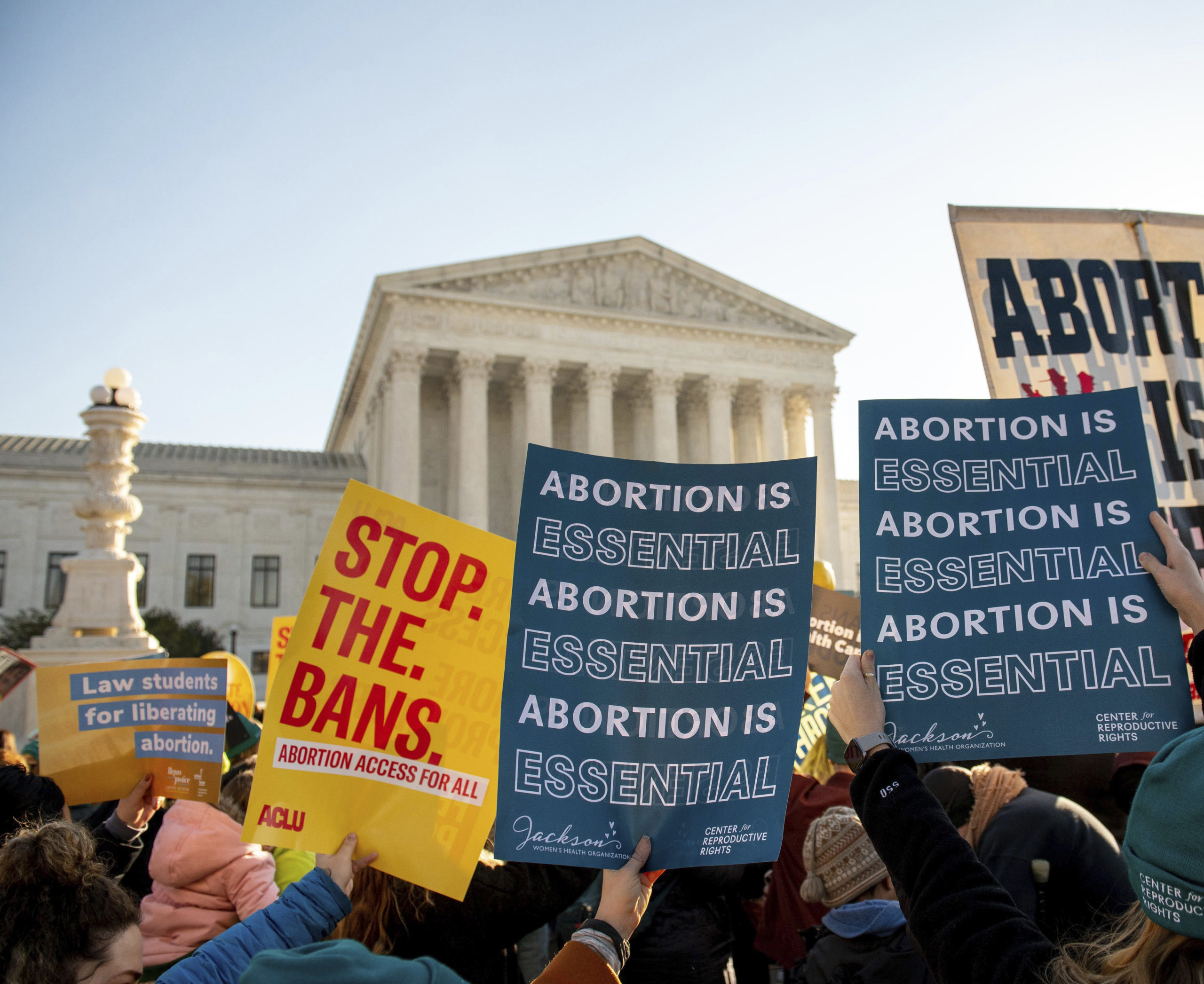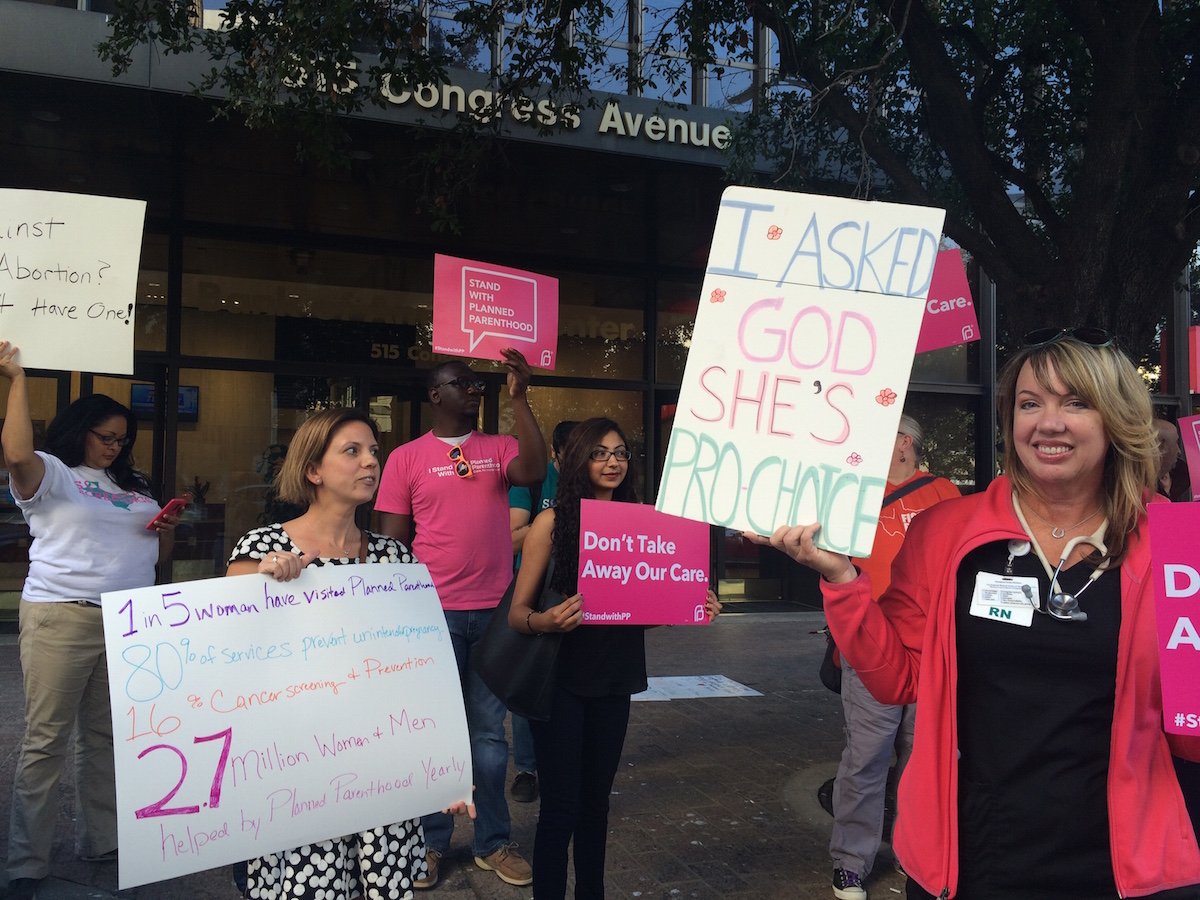
After Planned Parenthood Ouster, More Medicaid Births and Less Birth Control

Above: A patient gets her blood pressure checked at the Waco Planned Parenthood. Statewide, the provider has been blocked from providing publicly funded family planning services, and new research shows that without it, low-income Texans are having more publicly funded deliveries and seeing less access to highly effective contraceptives.
A new study released Wednesday reports that after anti-abortion Texas lawmakers blocked Planned Parenthood from participating in the Texas Women’s Health Program (TWHP) in 2013, fewer low-income women received the most effective kinds of contraception. The study, published in the New England Journal of Medicine, is also the first to analyze the subsequent significant rise in some Medicaid-covered deliveries after the provider’s ouster.
Comparing quarterly medical and pharmaceutical claims from 2011 to 2014, researchers with the Texas Policy Evaluation Project (TxPEP) found that 35 percent fewer patients received highly effective intrauterine devices (IUDs) and implants — known as long-acting, reversible contraception (LARC) — over the four-year period. Claims for the injectable Depo shot, which requires follow up every three months, decreased by 31 percent. Researchers found that the rate of Medicaid-covered deliveries among women in the Depo group then increased by 27 percent.
The reduction in claims, said lead author Amanda Stevenson, highlights the fact that despite recent state efforts to recruit more providers, and claims of success without Planned Parenthood, patients have lost services.
“The reproductive health safety net cannot just absorb all of the demand for highly effective contraception when you remove Planned Parenthood from the network,” Stevenson told the Observer. TxPEP’s findings, she said, “directly contradict” claims “that Planned Parenthood can be removed from federally-funded healthcare programs and other providers will just step up to pick up the slack.”
In 2011, Texas lawmakers voted to kick Planned Parenthood out of the Medicaid Women’s Health Program, which the federal government deemed a violation of federal law. Rather than support a program that denied patients the provider of their choosing, the feds yanked a $9-to-$1 match in funds at the end of 2012, and Texas dropped the women’s Medicaid program entirely. In 2013, Texas instead launched the state-funded TWHP replacement program — without Planned Parenthood. Since then, state health officials and lawmakers have boasted that the new program has more than 4,000 providers, and claimed that others could easily fill the void.
The new TxPEP data suggests otherwise.
For this study, TxPEP focused on patient claims that reflect the eligibility criteria for enrollees in the TWHP: legal Texas residents between the ages of 18 and 44 and who live at or below 185 percent of the federal poverty line (an annual income of approximately $44,000 for a family of four). They also compared services in counties with and without a Planned Parenthood health center.
The study found that contraceptive claims decreased most dramatically in counties with Planned Parenthood clinics, while counties without a Planned Parenthood clinic were largely unaffected.
The percentage of women who returned for their birth control shot every three months illustrates the long-term impact of losing Planned Parenthood as a program provider. Before the exclusion, 56.9 percent of patients living in counties with a Planned Parenthood clinic received their follow-up injections. After the exclusion, just 37.7 percent of patients got their subsequent shots.
In addition to cutting family planning funding by more than $70 million, the 2011 Legislature also funneled what remained of the state’s available family planning dollars away from specialty reproductive health providers, including Planned Parenthood. That, compounded by the cuts, led to the closure of 82 family planning clinics statewide; about one third of those were Planned Parenthood health centers.
Researchers also found that in late 2012, before the 2013 launch of TWHP without Planned Parenthood, claims for LARC methods were already decreasing, illustrating the immediate impact of cuts and changes to funding for reproductive health services.
“More general funding that is dedicated to family planning providers appear to be essential to the delivery of most effective methods of contraception,” Stevenson said.
The TxPEP study is the first to analyze the effect of the Planned Parenthood ouster on births covered by Medicaid, which critics of the change predicted years ago would result in more publicly-funded births. Stevenson called the 27 percent rate increase “huge.”
In Texas, more than half of all births are covered by Medicaid and more than half of all births are the reported result of unplanned pregnancy.
“The reproductive health safety net cannot just absorb all of the demand for highly effective contraception when you remove Planned Parenthood from the network.”
A 2015 TxPEP report found that more than half of Texans face barriers when accessing birth control or other preventive health services, and a state study by the Health and Human Services Commission revealed that the TWHP is serving thousands fewer patients than its predecessor, the Medicaid Women’s Health Program, which included Planned Parenthood. And according to another TxPEP study published recently in the medical journal Contraception, women reported having trouble finding a new provider, or having to pay for birth control that was once free, after the Planned Parenthood ouster.
As state health officials and family planning providers continue working to redesign the state’s reproductive health safety net, women are still reporting confusion in navigating TWHP. Two new family planning programs, set to launch in July, also ban Planned Parenthood from participation.
Stevenson said the study has major implications for other efforts to exclude Planned Parenthood from federally-funded healthcare programs such as Medicaid, especially in a new wave of anti-Planned Parenthood sentiment following the release of heavily edited videos produced by anti-abortion activists last summer. Texas has since tried to deny what few federal Medicaid funds remained available, via the state, to Planned Parenthood, but has so far been unsuccessful.
“What this shows, on a really big level, is that the tradition in the federal government of non-discrimination against medically qualified providers cannot be changed without consequences,” Stevenson said. “If we change that tradition, if we exclude some medically qualified providers like Planned Parenthood, there are consequences for service delivery.”

